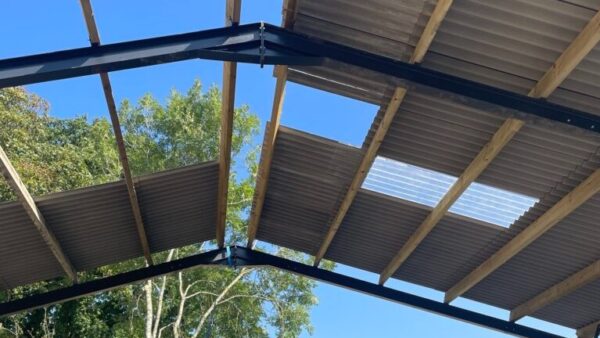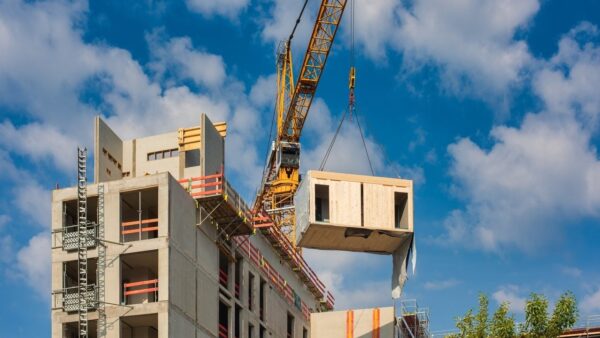
ID 45564626 © Michael Spring | Dreamstime.com
Firefighters have called for the government’s ban on combustible cladding to apply to all buildings, rather than those over 18m high.
The Fire Brigades Union (FBU) said the ban on combustible materials on external walls of all buildings that contain flats, as well as hospitals, residential care premises and student accommodation above 18 metres did not go far enough.
A height of 18m is historically linked with the reach capability of fire and rescue service equipment such as wheeled escape ladders (although these are now obselete)
The FBU said controls should instead apply to any building and not just those more than 18m tall, and that the use of materials allowed on external cladding should be restricted even further.
FBU general secretary Matt Wrack said: ““This is not the outright ban on combustible cladding that firefighters have been calling for.
“These measures do not deal with the existing cladding on nearly 500 buildings across England where people live and work every day. The government’s proposals only apply to buildings over 18 metres high, plus hospitals, care homes and student accommodation, when they should apply to all buildings, whatever their height or use. They continue to allow A2 materials, when they should permit only the highest standard of A1”.
Materials classed as A1 or A2 include elements such as metal, stone and glass, which seldom contribute to fires, or plasterboard, which makes no significant contribution.
Wrack also called for local authorities to be given more control over building standards for structures in their locality: “Fire authorities and local councils need to be fully funded to carry out fire safety inspections now and in the future. The government must change the law to ensure firefighters and tenants are consulted on safety matters in homes. The government must fund a national independent programme of research into building materials and government-run testing regime for materials.”
The FBU’s concerns were echoed by insurance firm Zurich Municipal.
Managing director Andrew Jepp said: “This is a welcome step in the right direction, but it doesn’t go far enough. We would question why the ban on combustible materials doesn’t apply to the entire external structure of residential and non-residential buildings of any height.
“As these proposals stand, a fire at lower levels could very easily negatively affect the level of safety provided to the overall building.
“A safer and more straightforward rule will remove ambiguity and future proof our built environment, whilst also minimising the potential for external fire spread beyond the reach of the Fire Service which must be the absolute priority of the ban.”
Comments
Comments are closed.











There is the simple approach that the insurance companies refuse to insure any building that has flammable cladding, along with anything else that poses a severe risk to life safety (whether in the Building Regulations or not).
That will quickly concentrate minds in the construction industry, and stop the merry go round of no one being responsible for seemingly anything as long as they can make it someone else’s problem.
Is there a BS etc definition of what is deemed ‘combustible’ in this instance? What are the tolerances / specs of something that is deemed combustible to something that isn’t?
The Fire Brigades Union. That would be a political organisation, then, charged with representing the interests of its members in matters of collective bargaining with employers.
Once again, uncritical journalism endorses the latest in a long and inglorious history of disingenuous mission creep in which trades unions seek to strengthen their negotiating credentials by reinventing themselves for political ends as disinterested third-parties whose only interest is the safety of the public.
What nonsense.
A ban on flammable cladding above certain heights and for specific use buildings is a good idea, but should sustainable materials, such as timber cladding, be banned from all buildings?
I wonder what lobbying interest groups are behind this idea apart from the fire service and insurance companies?
Future proofing the built environment…what does that mean please?
Non combustible entire external structure…so no more timber framed construction? Ban timber windows and doors? Really?
Insurance companies should refuse to insure existing buildings not built to a fire risk free standard?
If a ban on combustible materials is implemented it will devalue thousands of buildings and massively increase insurance premiums at a stroke, or leave buildings uninsurable, for no good reason. It will devastate the timber industry for no purpose other than trying to remove risk. People are the biggest risk factor and the cause of most damage and loss of life. Education would be a more effective and reasonable solution rather than an outright ban on sustainable products and materials.
Let’s hear from the design and sustainable development fraternities on this one. A whole lot more discussion and consultation is needed before making any decisions that we may regret.
An 18 metre tall building, residential or commercial, is between 5 to 7 storeys, certainly not a 3 storey walk up. The risk of fire due to combustible cladding materials appears to me to be just as dangerous at 18 metres as a high rise building. Whilst the height is always relevant, the use of the building and mobility of its occupants to escape via dedicated fire staircases is far more relevant. E.g. a multi storey aged persons home, hospital or similar type of building cannot be evacuated quickly by its own occupants. If the insurance companies refuse as a group to insure buildings with combustible cladding, the 18 metre height becomes irrelevant irrespective of what the new building regulations state. It appears to me that the Fire Brigades are absolutely correct if the cladding is combustible. Of course that leaves the 500 existing buildings with combustible cladding which is an economic nightmare for the Government and many of its occupants.
Re. Paragraph seven, Quote “The Government must fund a National Independant Programme of research into Building Materials and a Government run Testing Regime for Materials.” Unquote.
Surely this is what the BRE (Building Research Establishment) exists for, but perhaps it has never been expanded or upgraded over the years in line with progress, and is now outdated and in need of taking into the 21st Century.
Also Charles comment is very true, Insurance Companies could easily “Police” the Standards by refusing cover where appropriate.
Ill informed decisions are always dangerous. Before instant fixes are introduced can anyone confirm that the specification met the existing requirements of the Building Regulation/Approved Documents, that construction was in accord with both regulations and the specification, and was certified as such on completion.
As I have been retired for several years, after 40 years in construction, I have no vested interest or axe to grind.